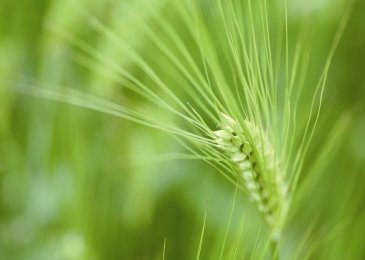Government credits technological interventions for increased agri output
April 12, 2013 | Friday | Reports/white papers | By Rahul Koul Koul
Government credits technological interventions for increased agri output
Among few of the major outcomes of recent landmark initiatives taken in the agriculture sector, outlined in the annual report of the Department of Agriculture and Cooperation, Ministry of Agriculture includes the National Food Security Mission (NFSM), a mega scheme of the Ministry of Agriculture, has been able to encourage farmers to adopt scientific knowhow and modern practices, leading to perceptible rise in production of food grains.
The other schemes as per report, that played an important role in achieving target were Bringing Green Revolution to Eastern India (BGREI) and the Rashtriya Krishi Vikas Yojana (RKVY). While the BGREI has resulted in increase in rice area, higher adoption of technology, and greater participation of small and marginal farmers, the RKVY has resulted in state governments allocating more funds to the farm sector. "The funding pattern, flexibility and down-to-top strategy of this scheme have led to greater investments in agriculture and better utilization of funds", says the report.
On the NFSM, the annual report says: "Mission has helped to widen the food basket of the country with significant contributions coming from the NFSM Districts. The Production of wheat has increased from 75.81 million tons in 2006-07 (pre-NFSM year) to 94.88 million tons during 2011-12, i.e. nearly 19 million tons against the envisaged target of 8 million tons. Similarly, production of rice has increased from 93.36 million tons in 2006-07 to 105.31 million tons in 2011-12 with an increase of nearly 12 million tons against the target of 10 million tons. The total production of Pulses has also increased from 14.20 million tons during 2006-07 to 18.24 million tons during 2010-11, with an increase of 4 million tons against the target of 2.0 million tons. During 2011-12, production of 17.09 million tonnes of pulses was achieved."
Says the report, "As per the second advanced estimates, the total rice production in the 7 implementing states is estimated at 55.62 million tonnes out of the all-India production of 101.80 million tonnes".
The annual report mentions that RKVY is a transformational jump in evolution of agricultural development schemes from variegated schematic approach followed so far through diverse but strait-jacketed schemes to a completely new approach in agriculture planning by allowing the States to plan their strategy and design appropriate schemes to implement that strategy with complete flexibility in scheme designs and autonomy in its implementation. RKVY has imparted definite momentum to the agriculture sector. Regular activities starved of resources, promising strategies languishing for lack of support, and limited opportunities for experimentation and innovation, have found a new hope in RKVY. States are allocating more funds to agriculture to take up schemes of agriculture development.
Demonstrating great optimism for future, the report mentions, "This is reflected in additional plan allocation to agriculture sector. There is a sense of hope and optimism. Agriculture, which had slid back stage, is making a comeback."










